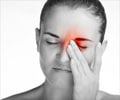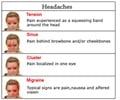- Migraine is a leading cause of disability across all age groups
- Routine imaging is not recommended in patients with migraine who have no red flags, atypical symptoms or abnormal findings on neurologic examination
- Effective acute migraine treatment includes acetaminophen, nonsteroidal anti-inflammatory drugs, and triptans
- Ubrogepant and rimegepant are new, effective migraine treatments, suitable for patients with cardiovascular disease in whom triptans are contraindicated
Health care utilization in patients with migraine: demographics and patterns of care in the ambulatory setting
Go to source).
What is Migraine
Migraine is a genetically influenced complex disorder characterized by episodes of moderate-to-severe headache, most often unilateral and generally associated with nausea and increased sensitivity to light and sound. Migraine is a common cause of disability and loss of work. Migraine attacks are complex brain events that unfold over hours to days in a recurrent matter. The most common type of migraine is without aura (2✔ ✔Trusted SourceMigraine Headache
Go to source).
Causes of Migraine
The exact cause of migraines is unknown, although they're thought to be the result of temporary changes in the chemicals, nerves, and blood vessels in the brain. Around half of all people who experience migraines also have a close relative with the condition, suggesting that genes may play a role.Some people find migraine attacks are associated with certain triggers, which can include starting their period, stress, fatigue, and certain foods or drinks (3✔ ✔Trusted SourceMigraine
Go to source).
When to use Imaging for Diagnosis of Migraine
Neuroimaging should be ordered in patients with an abnormal neurologic examination or red flags on history. Headache red flags consist of patient characteristics, features of the headache, and clinical symptoms or signs that should be assessed in every patient presenting with headache. Neuroimaging should also be ordered in patients with unilateral headache that always occurs on the same side (side-locked), a feature of trigeminal autonomic cephalalgias, which can be mimicked by underlying central nervous system diseases, such as pituitary tumors, intracranial dissections or aneurysms, and infections.Magnetic resonance imaging (MRI) is preferred over computed tomography (CT) as it provides better visualization of the brain tissues and is more sensitive in detecting subtle lesions.The use of contrast can further help with visualizing different parts of the the brain and should be considered when intracranial mass, infection, or inflammation are suspected.
For patients with stable headaches who meet criteria for migraine and have a normal neurologic examination are strongly recommended against routine neuroimaging. The detection of incidental findings can trigger undue patient anxiety and unnecessary investigations and procedures.
How to Approach to Acute Treatment of a Migraine Attack
The goal of treatment for migraine attacks is to provide rapid relief from pain and other migraine-related symptoms, to restore patient function and to prevent recurrence. Ideally, treatment should be self-administered, effective, well tolerated and affordable, and require minimal re-dosing.Migraine attacks associated with mild disability can be treated with simple analgesics, with an additional dose of the same or a different agent in the next 2–24 hours, if needed.
Classic Medicines for Acute Treatments for Migraine
Acetaminophen, acetylsalicylic acid, diclofenac, ibuprofen, naproxen sodium, and triptans have the highest level of evidence for treatment of migraine attacks. Dihydroergotamine, which has been available for decades, can be useful as a first-line agent in some patients (patients with severe attacks or who do not respond well to triptans, or both). However, the use of dihydroergotamine, given potential drug interactions and a high risk of vascular adverse effects.New Drugs for Acute Treatment of Migraine
Two classes of orally administered small-molecule drugs have recently been approved by the US Food and Drug Administration for the treatment of migraine: ditans and gepants. They can be used in patients with cardiovascular disease, in whom triptans are contraindicated.References:
- Health care utilization in patients with migraine: demographics and patterns of care in the ambulatory setting - (https://pubmed.ncbi.nlm.nih.gov/12656703/)
- Migraine Headache - (https://www.ncbi.nlm.nih.gov/books/NBK560787/)
- Migraine - (https://www.nhs.uk/conditions/migraine/)
Source-Medindia















